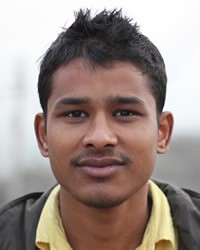The Indians began to migrate to Suriname (a former Dutch colony in South America) in 1873 and worked as laborers. Their culture and language helped to keep the community together. The South Asian migration to the Netherlands before the 1970s was small, but it soon grew. After Suriname's independence from the Dutch in 1975, many Indians emigrated to the Netherlands. Some Indians from Uganda came to the Netherlands in the 1970s to avoid persecution. Pakistanis came to do unskilled work in the largest Dutch cities. They hoped to improve their standard of living. Earlier South Asian migrants found work for their relatives and friends who came later.
Today the South Asians live mostly in Amsterdam, Rotterdam, The Hague, Utrecht, Almere and in the surrounding regions. They speak Hindi, Dutch, English and other languages.
South Asians in the Netherlands tend to keep to themselves. There are some mixed marriages between Indians and the Dutch, but very few between Hindus and Muslims. They often have arranged marriages. Suicide is a problem in the South Asian community in the Netherlands.
Some Hindu teachers came to the Netherlands in the 1980s. A few Tamils are in the Netherlands have their own religious temples.
Most South Asians in the Netherlands are Hindu, others are Muslims and there are a few Christians. More than half of the Hindu Indians worship in the traditional Hindu way. Some belong to a reform movement called Arya Samaj. Of the Muslims most are Sunni, and some are Ahmadiyya. There are Indian Christians converted from Hinduism and others from the Indian state of Goa. There are also Indian atheists and agnostics.
The Netherlands is a secularized country. South Asians are unlikely to hear the gospel unless someone makes a point of telling them.
Pray for the Lord to thrust out loving workers to the South Asians in the Netherlands.
Pray for South Asian evangelists, pastors and disciplers to tend to spiritual needs in the Netherlands.
Pray for South Asians to have the spiritual hunger it takes to seek and find the Lord.
Scripture Prayers for the South Asian, general in Netherlands.
www.urmila.de/english/europeindex.htm
en.wikipedia.org/wiki/Indians_in_the_Netherlands
| Profile Source: Joshua Project |












